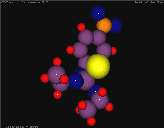|
|
|
|
| Ecology Lesson One Student Example
Biome Type: Arctic Tundra Abiotic Factors: precipitation, temperature, permafrost, wind Biotic Factors: Low Shrubs (sedges, reindeer mosses, liverworts, and grasses), Crustose and Foliose Lichen, Herbivores (lemmings, voles, caribou), Carnivores (arctic foxes, wolves, polar bears), Migratory Birds (ravens, snow buntings, falcons, loons), Insects (mosquitoes, flies, moths, grasshoppers), Fish (cod, flatfish, salmon).
Extreme cold and harsh winds in the Arctic Tundra have forced plants to adapt to carry out photosynthesis at colder temperatures and due to permafrost, to survive with shallower root systems. They have also had to change reproductive processes because of a short growing season of 50 to 60 days in length. As for the animals that must live in this extreme environment, they have adapted to living through harsh, cold winters - most of them hibernating in the winter because of the low amounts of food available during this time. The mammals have extra fur and extra fat for insulation, while the birds migrate to warmer areas to avoid the cold and lack of food. |
|||||
|
|


